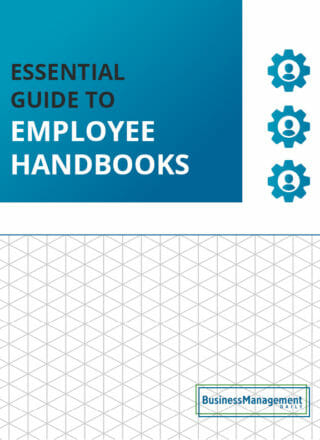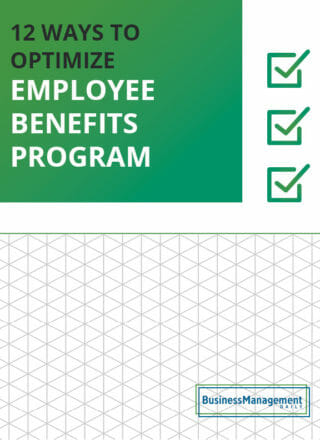Understanding the importance of employee motivation

From lunch break to customer win: A case study in engagement
Store employee Jack heads toward the employee lounge for lunch when the clock strikes noon. On the way, he notices a confused-looking customer standing in the electronics area with no co-workers in sight.
Though his stomach grumbles, Jack stops and asks the lady if she needs help. The woman tells him she wants to buy a video game for her grandson, but she is confused about what might be appropriate for an 8-year-old.
Jack directs her to the right area for her grandson’s gaming system. Then, he patiently shows her where the game’s age rating appears on the packaging. Finally, he asks her a few questions about what the kid likes.
Turns out the grandson is crazy about superheroes, so Jack suggests a Lego Batman game. The elated woman thanks Jack profusely and deems it the perfect gift.
Lucky for the organization, Jack is a motivated employee. He easily could have hustled off to eat rather than stopped to help. Instead, Jack displays a willingness to go the extra mile.
He believes in his employer’s mission to provide exceptional customer service and feels personally responsible for contributing. And it doesn’t hurt that the company gives a bonus each month to the team member it feels went above and beyond!
What is employee motivation?
Motivated employees are driven to act in ways that help the employer achieve goals. They exert effort, produce good work, and operate on a higher level. What inspires motivation? Different things drive each individual, so companies often like to implement a variety of motivation strategies.
Motivation is generally divided into two types: extrinsic and intrinsic.
Extrinsic motivation encourages people to act in a certain way to obtain an external incentive, such as money, a perk, or public recognition. An example is the bonus given to Jack’s company’s top performer for the month.
Intrinsic motivation relies on internal factors. People motivated in this manner perform the way they do because they like the challenge, are invested in the result, or find personal fulfillment.
Jack helped out when he didn’t have to because it made him feel good to aid someone in need and to contribute to the company’s mission.
Employee motivation (especially intrinsic motivation) goes hand in hand with another concept — employee engagement. Employee engagement involves the emotional connection, passion, and sense of commitment workers bring to their role. Engaged employees feel a sense of purpose, and motivated ones carry it out.
The importance of employee motivation and employee engagement
What do employers stand to gain from a motivated workforce? The global analytics firm Gallup regularly looks at this question in detail, so let’s look at some metrics. When comparing employee engagement levels, Gallup found that top—and bottom—quartile business units and teams had these differences in business outcomes:
-
81% less absenteeism.
-
18% less employee turnover for high-turnover organizations.
-
43% less employee turnover for low-turnover organizations.
-
28% less theft.
-
64% less safety incidents (accidents).
-
58% less patient safety incidents.
-
41% less quality defects.
-
10% higher customer loyalty.
-
18% higher productivity.
-
23% higher profitability.
Let’s translate these stats into plain terms. Engaged employees show up for work, not find reasons to miss it. Staffing is dependable and consistent.
The company enjoys good employee retention, which prevents the need to spend money and time recruiting and training new talent. Stealing becomes less common. Workers put more attention and effort into their work, leading to better products and services and fewer mishaps.
Customers hold a better impression of your brand and choose you over a competitor more often. The company produces more and generates more money.
Other research shows similar positives. Take this study mentioned by the American Psychological Association in an article on employee motivation:
A social and organizational psychologist works at Harvard Business School. She and her colleagues conducted a study. They asked more than 200 employees to participate. The employees worked at seven companies.
These companies operated in the tech, chemical, and consumer products industries. The researchers asked the employees to write daily diary entries. The entries described events at work.
Additionally, the researchers asked the employees to rate their own feelings. They rated intrinsic motivation. They also rated extrinsic motivation. Furthermore, they rated creativity and collegiality. They rated other measures as well.They also collected periodic ratings of the workers’ creativity from colleagues.
The result: When people reported more intrinsic motivation, their creativity simultaneously rose, as did other desirable states such as productivity, collegiality, and commitment to work.
Effects of high employee engagement and motivation on the work environment
 Some of the benefits of having employees with high motivational levels cannot be easily measured. But managers fortunate enough to have such individuals as team members know their importance to company culture and a positive work environment.
Some of the benefits of having employees with high motivational levels cannot be easily measured. But managers fortunate enough to have such individuals as team members know their importance to company culture and a positive work environment.
Possible contributions from people with high vs. low motivation include:
Willingness to accept change
Their interest in the actions necessary for the company to fulfill its goals motivates individuals to give new policies or ways of doing things a chance. They tend to hear things out, and they can be vital to encouraging co-workers to do the same.
Interest in giving and receiving employee feedback
Because they see their performance as integral to company success, motivated employees want to know what is needed to do their best work. They invite constructive criticism and act accordingly.
Likewise, they often are more likely than unmotivated peers to speak up when they spot a problem. They care enough to do so.
Greater innovation
Those with low motivation regularly just do what they are told. They don’t think about ways to improve operations. Highly motivated workers formulate ideas and push beyond the status quo in the name of excellence.
Upping everyone’s game
Lastly, don’t discount the value of the general positive vibe produced by motivated employees. Their hard work inspires others to achieve similarly. Their dedication to company goals leads colleagues to examine their own commitment. And their positive energy often can’t help but boost the motivation levels of everyone they encounter in the workplace environment.






